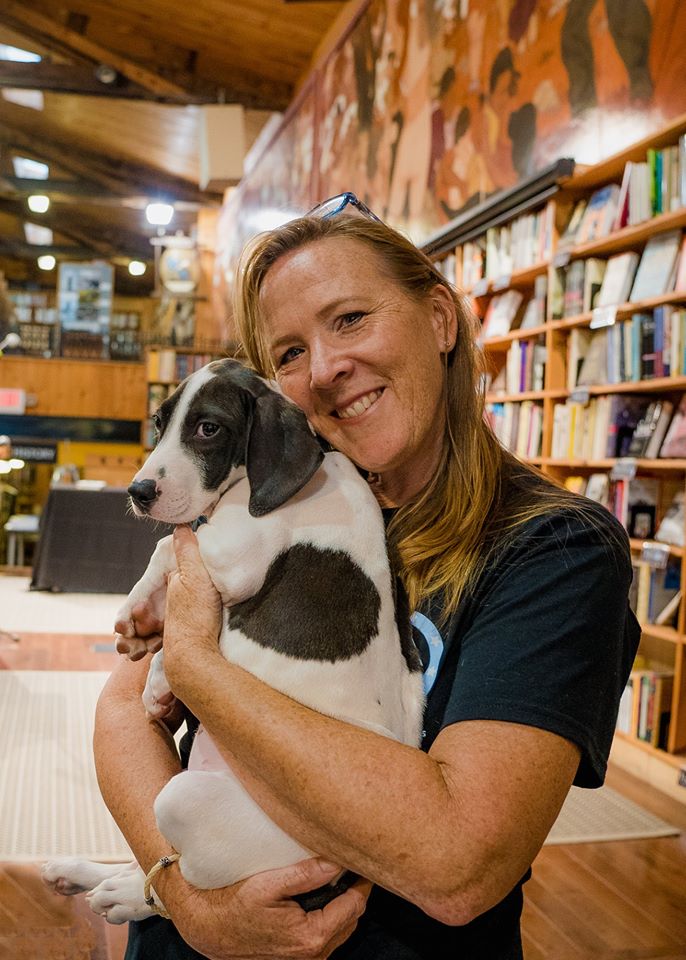In 2011, hope came to Hope City Animal Control in Hope, Arkansas in the form of a new organization created specifically to save lives.
At the time, the shelter was euthanizing 92% of the dogs (no cats—this city deems them free-roaming animals, so they are on their own). Enter this group of passionate women who created Hope for Paws and partnered with the shelter by fostering and then moving dogs out through rescue to bring those numbers down.



The shelter does still euthanize for space and length of stay, but they were able to save 80% of the 1300 dogs who came through their building last year. This year they, like so many places, are struggling. Their rescue connections (Faithful Companions Dog Rescue of New Hampshire and Road Home Rescue in Rhode Island) are not pulling as many dogs as they have in the past and they desperately need more rescue partners.
Michael, a part-time ACO (they also have a full-time ACO), told us the legal stray hold is 5 days, but they don’t euthanize automatically euthanize when time is up, especially if the dog seems adoptable and there is room. The building has twenty kennels with indoor/outdoor space separated by guillotine doors. More than twenty other dogs are currently fostered by the volunteers of Hope for Paws.

Carol, the current president of Hope for Paws, who has been involved since the beginning, didn’t walk through the kennels with us on our visit. She told me that she never goes back there. This surprised me as she is the person who invited us to come and is a fierce advocate for the rescue and the dogs. She said she can’t handle getting to know dogs who could be euthanized.

The dogs pulled for foster are the ones who will make it to rescue, so any dog still in the shelter is at risk. Once in a foster home, these days dogs could wait for months, but at least they are safe and in a home, even if it is temporary. One of the volunteers, Jennifer, told me her most recent dogs just left after six months with her. Most of the women we met are fostering multiple dogs – some as many as four or five or more.
When we walked through the kennels, there was classic rock playing softly for the dogs, who seemed calm compared to many traditional shelters. The dogs had karunda beds and all came to the front of the kennels to see us.









One dog tugged at my heartstrings the most, Max’s owner was a truck driver and used to take him all over the country with him. His company had a change of management and the new owners said the dog had to go. He was in tears surrendering Max to the shelter.
I worry for this big dog, with the giant head and soulful eyes. Nancy took some extra pictures of him outside of his kennel in the play yard, despite the rain to help market him to rescue, but his chances aren’t good.





Because the shelter doesn’t double up dogs in kennels, we gave out peanut butter stuffed bones to the whole shelter. Peanut butter bones was one of the impact items donated during our online auction. Nearly every one of the dogs looked at the bones skeptically at first, but by the time we left most were happily chewing on them. Hopefully, the bones brightened up that rainy Saturday for them.


I was surprised to see that the majority of the dogs were small to medium dogs and many very young. They seemed like dogs most rescues would happily pull, not the kind of dogs we used to see on our shelter tours. Michael said they were the typical mix for Hope – medium size, young dogs.
The rescue has a local vet they work with and they try to spay or neuter everything before it leaves. They also treat heartworm (60% of the dogs that come to the shelter are Heartworm positive). Three times a year they sponsor a mobile spay/neuter clinic for the community’s animals, normally fixing 100 animals each time.
The city does not give the shelter a budget for food, so Hope for Paws buys it and also gets food donated by the local Walmart. They pay for vaccines, supplies, all the medical treatments, surgeries, and health certificates. The city only covers the salary of the two ACOs, their vehicles, and the building maintenance. The women were quick to say they have a lot of community support. Plus, they bring in a lot of money through Amazon Smile.
NOTE: On this tour, we visited four shelters that do not receive budget money for food/supplies or very much medical. I believe this practice is in place because technically all of those shelters are still considered ‘pounds’ by their county leadership and community. Pounds are just what the word connotes – a place to impound animals until their owners claim them or they are destroyed. Most counties have a 3 or 5 day hold. It is not in the ACO’s job description to find homes for the dogs, so unless a group like Hope for Paws emerges, the dogs have little chance. Until the taxpayers of the county demand something better, this practice (which used to be the case all over the US) will stay in place.
Hope for Paws is a beautiful example of the power of a group of committed, determined women to change the narrative in these small towns all over the south. Carol said that she lives just down the road from the shelter and for years she drove by with her head turned the other way. She hated the place and just couldn’t look at it. It wasn’t until Kelly found a stray golden retriever and brought it to the shelter only to discover it would be killed and decided to do an adoption event at the shelter that tide began to turn, and Hope for Paws was born.
That was the beginning of the story, as one after another of these women began joining them to foster and help and ultimately save thousands of lives over the last twelve years. And now, despite the regular spay/neuter clinics, the number of animals arriving at the shelter hasn’t changed. The outcomes have improved, but they need more fosters and more rescue partners to reach the point where they can save every adoptable dog. What they need most is for their county to join them in taking responsibility for these precious lives—seeing them as valuable and worth saving.
They are holding their own, but like so much of the south, what they desperately need is a cultural change of heart. They need people to care. As we drove out of Hope in the pouring rain, driving east on Route 30 where the speed limit is 75mph, we followed a pickup with two young yellow labs in the bed of his truck. The dogs looked panicked in the wind and rain, jumping at the window of the truck, but the driver never slowed and we lost track of him as he sped ahead of us well above the speed limit.
Is it ignorance or apathy? I’m still not sure, but I’m grateful that there are people like Carol and Kelly and Donnia and Dusty and Sandy and Christine and Lisa and Jennifer and Jenn and the others who give up their hearts and homes to save these dogs. I believe they don’t work in vain. I believe that the example they set is moving the needle slowly, one soul at a time.
We CAN save the adoptable animals. It IS possible. These women haven’t given up hope and neither have I. You can follow and support them on Facebook.
We’re getting ready to head out on another shelter tour January 9 to visit shelters in North Carolina. We need help purchasing much-needed items to take to the shelters. Click here to purchase some of those items.

Until each one has a home,
Cara
If you want to learn more, be sure to subscribe to this blog. And help us spread the word by sharing this post with others. Visit our website to learn more.
You can also help raise awareness by following/commenting/sharing us on Facebook, Instagram, YouTube, and Tik Tok!
Learn more about what is happening in our southern shelters and rescues in the book, One Hundred Dogs & Counting: One Woman, Ten Thousand Miles, and a Journey Into the Heart of Shelters and Rescues (Pegasus Books, 2020). It’s the story of a challenging foster dog who inspired me to travel south to find out where all the dogs were coming from. It tells the story of how Who Will Let the Dogs Out began. Find it anywhere books are sold. A portion of the proceeds of every book sold go to help unwanted animals in the south.

Watch our Emmy-nominated, award-winning short documentary about rescue in western Tennessee here.
For more information on any of our projects, to talk about rescue in your neck of the woods, or become a WWLDO volunteer, please email whowillletthedogsout@gmail.com or carasueachterberg@gmail.com.
And for links to everything WWLDO check out our Linktree.



Damon Whitsell
This was a great article and the pictures were awesome. THANKS FOR WHAT YOU DO, WHO WILL LET THE DOGS OUT 🙂